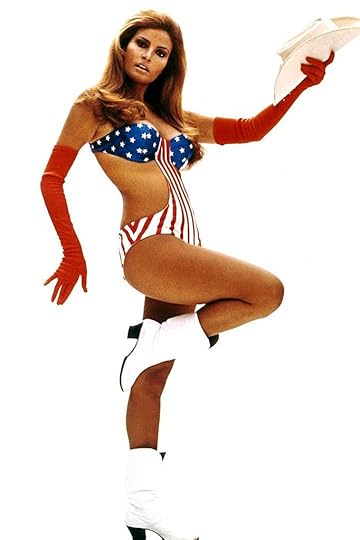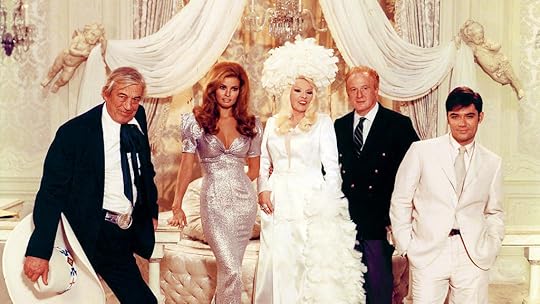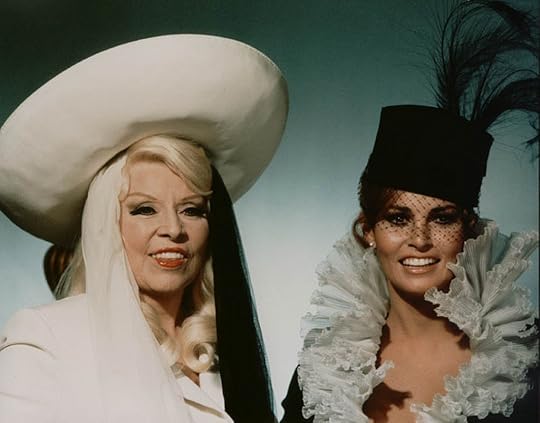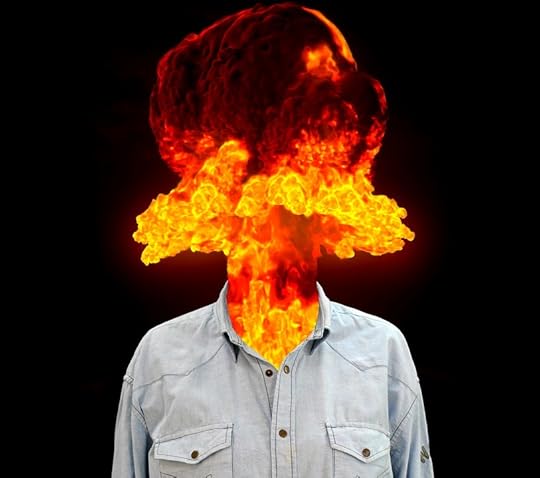What do you think?
Rate this book


264 pages, Hardcover
First published January 1, 1968








In it Vidal anticipates the sour, slackening coda of the great countercultural dream: "free love" being replaced by pornography; the avant-garde being killed by Warhol's embrace of consumerist Pop Art; [Vidal's] own adored Golden Age Hollywood cannibalized by reality television.
[T]he films of 1935 to 1945 inclusive were the high point of Western culture, completing what began that day in theatre of Dionysos when Aeschylus first spoke to the Athenians.
Myra is dedicated to Vidal's friend Christopher Isherwood, author of the autobiographical Berlin Stories, which inspired the musical and movie Cabaret, set in decadent Weimar Germany. In his response to Vidal, Isherwood called Myra a "very subtle psychological self-portrait"—a remark that most critics have taken as a joke. But Isherwood was right: the more we have learned from Vidal's biographers about his turbulent emotional history and hyperactive sex life, the clearer it is that Myra Breckinridge is a dreamlike distillation of Vidal's aspirations, passions, compulsions, and fears.
As usual, I am ambivalent. On the one hand, I am intellectually devoted to the idea of the old America. I believe in justice, I want redress for all wrongs done, I want the good life—if such a thing exists—accessible to all. Yet, emotionally, I would be only too happy to become world dictator, if only to fulfill my mission: the destruction of the last vestigial traces of traditional manhood in the race in order to realign the sexes, thus reducing population while increasing human happiness and preparing humanity for its next stage. (Vidal's italics)
Being Jewish as well as neo-Freudian, he is not able to divest himself entirely of the Law of Moses. For the Jew, the family is everything; if it had not been, that religion which they so cherish (but happily do not practice) would have long since ended and with it their baleful sense of identity. As a result, the Jew finds literally demoralizing the normal human sexual drive toward promiscuity. Also, the Old Testament injunction not to look upon the father's nakedness is the core to a puritanism which finds unbearable the thought that the male in himself might possess an intrinsic attractiveness, either aesthetically or sensually. In fact, they hate the male body and ritually tear the penis in order to remind the man so damaged that his sex is unlovely. It is, all in all, a religion even more dreadful than Christianity.
Ecstatically, I fingered the lovely shape whose secret I must know or die, whose maze I must thread as best I can or go mad for if I am to prevail I must soon come face to face with the Minotaur of dreams and confound him in his charneled lair, and in our heroic coupling know the last mystery: total power achieved not over man, not over woman but over the heraldic beast, the devouring monster, the maw of creation itself that spews us forth and sucks us back into the black oblivion where stars are made and energy waits to be born in order to begin once more the cycle of destruction and creation at whose apex now I stand, once man, now woman, and soon to be privy to what lies beyond the uterine door, the mystery of creation that I mean to shatter with the fierce thrust of a will that alone separates me from the nothing of eternity; and as I have conquered the male, absorbed and been absorbed by the female, I am at last outside the human scale, and so may render impotent even familiar banal ubiquitous death whose mouth I see smiling at me with moist coral lips between the legs of my beloved girl who is the unwitting instrument of victory, and the beautiful fact of my life's vision made all too perfect flesh.